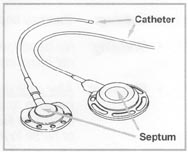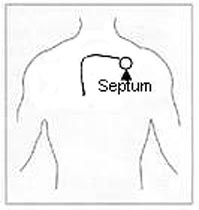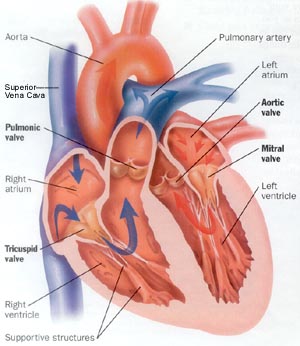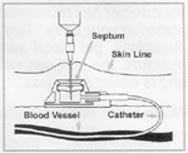|
The goal of this second operation was reattachment of the colon to the
rectum, closure of the colostomy, and implantation of a port to be used later
for introduction of the chemicals associated with chemotherapy.
Preparation for this surgery was extensive. It included
o blood tests
o x-rays
o EKG
o pre-op visit to primary care-giver
o pre-op visit to surgeon
o forms, forms, forms, forms
o diet, diet
o antibiotics (flush)
The operation was scheduled for a Friday. On Tuesday I was allowed
what is called a full liquid diet, characterized by such things as ice cream,
cream of rice, and tomato soup. On Wednesday and Thursday I was on clear
liquids - broth, jello, and ginger ale.
Thursday afternoon I had a whole cocktail of antibiotics over a few hours.
Intentional or not, the result of the diet and the antibiotics was a pretty
complete flush of my digestive system. Through the evening and night, I'd
guess two quarts of fluid came out through the colostomy. By the end of
that session, I think I presented a pretty clean system to the surgeon.
The surgeon made the new incision in virtually the same place as with the
original surgery, although I think he may have started 1 1/2" lower and finished
about the same amount lower. A close examination of the staples in the
following pictures shows some scar tissue above the top of the new wound.
This sequence was taken soon after I was discharged from the hospital.
Actual photos can be seen in the other
version of this Ponogram –
click here.
This picture shows the implanted port on the upper chest, the entry wound
down the middle of the abdomen, and the colostomy closure. The port is
covered in detail in a separate section below.
Actual photos can be seen in the other
version of this Ponogram –
click here.
From left to right on the left picture, see the ancient appendectomy scar
with the newer cecostomy scar on top of it, the entry wound closed with staples,
and the colostomy closure closed with staples.
Actual photos can be seen in the other
version of this Ponogram –
click here.
This right picture focuses on the colostomy closure. The redness
beneath the wound is probably skin reaction to the ever-present adhesive (but
may also be the surgeon's initials).
As I understand it, the stoma was removed from its attachment to the
abdomen, appropriately trimmed back to viable material, the same was done with
the dormant section of colon that had been sutured, and the two ends were
connected with staples. The connection was tested with air pressure for
any leaks (yeah, this is not a joke). Both the entry wound and the
colostomy closure wound were closed with sutures on the inside and staples on
the outside.
The port was implanted and its catheter was threaded through minor vessels
into the vena cava. The end of the catheter is trimmed to dump very near
the heart where blood quantity will quickly dilute the chemicals. Those
wounds were closed with stitches.
The surgeon scheduled several hours for all these procedures, but
accomplished everything including his signature in less than two hours.
Recovery from Reattachment Surgery after Colon Cancer
Again I came to in a fog from the second operation. However, this
time I knew what I should expect my condition to be. Artificial support
consisted of
o IV for nourishment, hydration, pain medication and other meds
o catheter for urine drainage
o that's it!
Just like the first time, the IV was controlled by a pump that regulated
the speed of the various drips. It also provided a "happy button" for the
patient to add a shot of morphine at any time up to every 10 minutes as required
for pain.
The catheter was a tube that led to a plastic bag and was
gravity-operated.
I learned that the colon had been reattached to the rectum, the colostomy
had been closed, and a port had been implanted for later chemotherapy. The
operation had been a success and was completed in less than two hours.
Basic longer term directions to me were to do everything possible to
regain my strength so that I could begin chemotherapy. Immediate
directions were to pass gas through the new attachment, then loose material, and
finally solid formed material.
The catheter was very quickly removed and the urinary system immediately
returned to normal.
I was allowed nothing by mouth for a short time after the surgery.
The IV supplied nourishment, hydration, and medication. In quick steps, a
clear liquid diet, full liquid diet and finally a normal diet were introduced
and the IV was removed.
The day after the operation I was up and walking. From that day on I
was up walking every day. The incentive for activity was to get the bowel
working again. I don't remember the day, I think it was three days after
the surgery, but the time was 3:58p. I felt an urge and made a noise from
a place that had missed that action for more than three months. I called
my local angel with a report of the report and the word went out far and wide.
Now it became necessary to get food in the stomach to exercise the rest of
the function. A normal diet came fairly soon and before I left the
hospital I had passed unformed, loose stool and six days after my return home my
#1 solid formed #2 occurred. Although I do have a picture, I decided to
spare you that thrill. Initial "formed" stool had an interesting cross
section, somewhat like Saturn, a circle with two horns. Eventually the
cross section became more oval or circular. Interesting stuff, huh?
I had a thick protective covering over the entry wound and the colostomy
closure immediately after the operation. When the surgeon came in the day
after, that covering was removed and not replaced. The next day the entry
wound was drying up nicely, but there was significant drainage from the closure.
It was necessary to keep gauze and a bandage on that wound.
I was released from hospital on the seventh day. By that time I was
on a regular diet, I was passing gas and unformed loose stool, the entry wound
was dry and fine but the closure was draining, I had found a way to wiggle
myself out of bed, but I was using regular pain relief. My son Stuart had
arrived. He brought me home from the hospital and provided the help
required until I was able to drive and take over again.
Stitches and staples were removed ten days after the operation. The
drainage from the closure was due to an infection. The surgeon reopened
one side of the wound, cleaned it out and packed it with gauze. Nurses
taught me how to maintain the packing and that was an uncomfortable chore.
It only lasted a few days though. Fresh flesh filled in the hole at a
remarkable rate!
Since then I have continued to regain strength and flexibility. I'd
like to think that improvement is still going on, but it's hard to distinguish
between leftover operation issues and new chemotherapy side effects issues.
I guess I'll know if I've recovered from the second operation when the chemo is
done. Chemotherapy started just 31 days after the reattachment surgery.
Port for Chemotherapy after Colon Cancer
During my second operation for reattachment of the colon to the rectum,
the surgeon also implanted a port to be used for introduction of the chemicals
associated with chemotherapy. The device consists of a wafer that seems to
be about the size of three dimes stacked together on a quarter with a tail of
several inches.
 |
 |
The picture here in the full version of P-gram #130 may be upsetting to some who
are sensitive to such things. If you want to see the actual
photos you can click
here.
|
Left is a diagram of typical ports. While earlier ports had metal
parts, mine is entirely plastic.
The port is implanted in the upper chest (mine was on the left side) in a
little "pita pocket". The "tail" is actually a catheter that is threaded
through minor vessels into the superior vena cava, a large vein that feeds
directly into the heart. The center diagram shows where the port is
implanted. The picture was taken soon after the operation. Stitches
and yellow sterile wash are still present. The heart diagram below shows
the superior vena cava. The end of the catheter would be just about where
that label is on the diagram.

In use, a needle is inserted into the port and affixed with a clever
plastic transom and, of course, quantities of the ever popular adhesive tape.
The issue of body hair vs. adhesive quickly becomes a non-problem as the hairs
are systematically removed by the roots.

This is a diagram of the port in use. The diagram does not include
the transom which protects the portion of the needle just outside of the skin
and its connection to the IV tube.
Although I focused on the value of the port for chemotherapy, I found that
any time I drew a nurse who was port certified, blood tests came from the port
as well!
|